Wildfire Hand Tools: The Essential Arsenal
- April 5, 2024
- 0 comment
Wildfires are a formidable force of nature, and combating them requires not only courage but also the right equipment.
Hand tools designed for wildland firefighting are built to endure tough conditions and are crucial for the control and extinguishing of wildfires. The selection of hand tools for wildland firefighting is honed by years of experience and innovation, designed to tackle the unpredictable nature of fires.
They are the essential arsenal for creating control lines, clearing vegetation, and managing the land to halt the advance of flames. Understanding these tools provides insight into the challenging and intricate work of controlling wildfires.
List of Wildfire Hand Tools
- Pulaski: The Versatile Workhorse
- McLeod: The Ground Preparer
- Shovel: The Earth Mover
- Chainsaw: The Power Cutter
- Fire Rake: The Land Clearer
- Fire Swatter/Flapper: The Extinguisher
- Water Backpack: The Portable Extinguisher
- Safety Gear: The Protector
1. Pulaski: The Versatile Workhorse
The Pulaski is a specialized tool that is part axe and part adze. It’s named after Ed Pulaski, a legendary forest ranger, and is used for both chopping and digging. With the axe head, firefighters can cut through roots and chop wood, while the adze is ideal for digging out small trees and scraping away vegetation to create firebreaks.
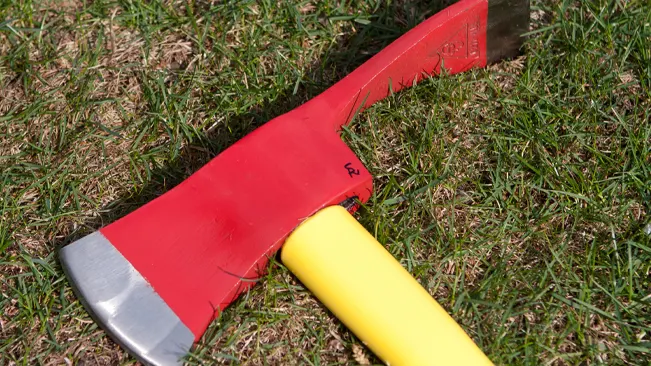
| Specification | Details |
|---|---|
| Head Design | Dual-purpose with one side axe and one side adze |
| Material | Head typically made of high-carbon steel |
| Handle | Usually constructed from hickory or fiberglass |
| Overall Length | Commonly around 36 inches (91 cm) |
| Weight | Varies, but generally around 5 lbs (2.3 kg) |
Tips for Maximizing Efficiency with the Pulaski Tool
- Proper Grip and Stance: Hold the Pulaski with a firm grip and maintain a stable stance. Your feet should be shoulder-width apart for balance while swinging or digging.
- Swinging Technique: When chopping, use your whole body for the swing, not just your arms. Rotate from your hips to generate power, ensuring a more efficient and safer chop.
- Digging Effectively: For the adze side, angle the tool so it cuts into the soil effectively. Use your legs to help drive the tool into the ground, reducing arm fatigue.
- Safety First: Always be aware of your surroundings and maintain a safe distance from others when swinging the Pulaski to prevent accidents.
- Tool Maintenance: Keep the edges of both the axe and adze sharp for maximum effectiveness. Regularly inspect the handle for cracks or wear and replace it if necessary.
Do and Don’t in Using Pulaski during Wildfire
Do: Use the Pulaski’s axe side for chopping wood and roots and its adze side for digging and scraping soil, making it invaluable for constructing fire lines.
Don’t: Avoid using the Pulaski for tasks beyond its capability, like prying large rocks or heavy-duty digging, as it may lead to tool damage or personal injury.
2. McLeod: The Ground Preparer
The McLeod is a two-sided tool featuring a large, hoe-like blade on one side and a tined edge on the other. It’s used to rake through debris, clear brush, and create a mineral soil fire line, which is a gap in vegetation down to the soil that can stop a fire’s spread.
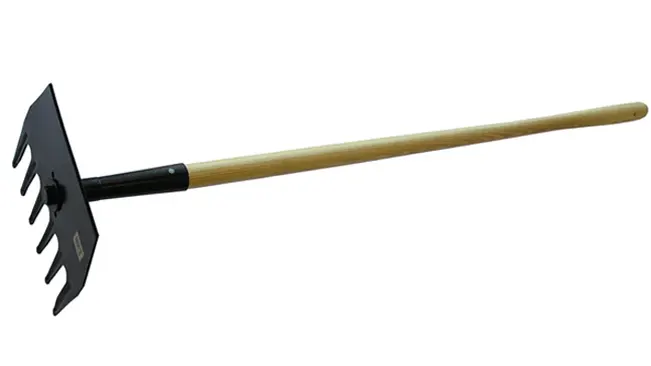
| Specification | Details |
|---|---|
| Head Design | Two-sided with a large hoe-like blade and a tined edge |
| Material | Head typically made of high-grade steel |
| Handle | Often constructed from wood or reinforced fiberglass |
| Overall Length | Generally ranges from 40 to 60 inches (102 to 152 cm) |
| Weight | Usually around 5 to 8 lbs (2.3 to 3.6 kg), varying by design |
Tips for Maximizing Efficiency with the McLeod Tool
- Maintain a Stable Stance: Use the tool with your feet shoulder-width apart for balance.
- Use Both Sides Effectively: Alternate between the hoe side for cutting and the rake side for clearing debris.
- Minimize Soil Disturbance: Scrape lightly to preserve soil structure while creating fire lines.
- Clear a Wide Path: Ensure the path is wide enough to effectively serve as a firebreak.
- Regular Maintenance: Keep the tool clean and its edges sharp for optimal performance.
Do and Don’t in Using McLeod during Wildfire
Do: Employ the McLeod for raking dead leaves and debris, and use its hoe-like side for cutting into and smoothing out soil to establish and maintain firebreaks.
Don’t: Refrain from using the McLeod to move large rocks or heavy logs, as it’s not designed for heavy lifting and could result in damage to the tool or user.
3. Shovel: The Earth Mover
A firefighting shovel isn’t your average garden tool. It has a sharper edge and is made from tempered steel to cut through tough terrain. Firefighters use shovels to move dirt, dig trenches, and throw soil over small flames.
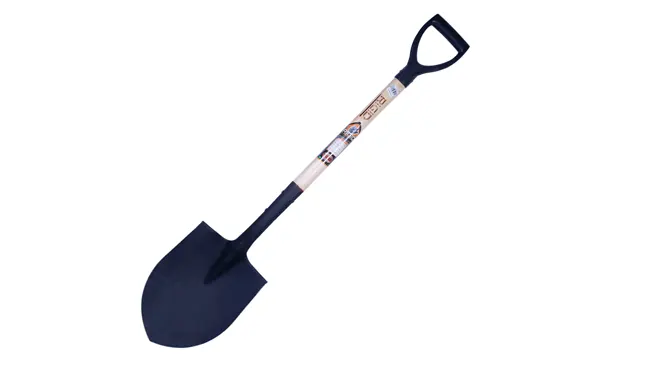
| Specification | Details |
|---|---|
| Design | Flat or slightly rounded edge, pointed tip |
| Material | High-carbon steel head, wooden or fiberglass handle |
| Length | Typically around 40 to 50 inches (102 to 127 cm) |
| Weight | Varies, but generally around 5 to 7 lbs (2.3 to 3.2 kg) |
| Handle Type | Straight or D-handle for leverage and grip |
Tips for Maximizing Efficiency with the Shovel Tool
- Dig Effectively: Use a combination of foot pressure and arm strength for efficient digging.
- Clear Vegetation: Use it to remove small plants and roots that can fuel fires.
- Create Firebreaks: Dig down to mineral soil to create effective firebreaks.
- Extinguish Small Fires: Use soil to smother small flames if necessary.
- Ensure Proper Handling: Grip the handle firmly and use your knees to lift, reducing back strain.
Do and Don’t in Using Shovel during Wildfire
Do: Use the shovel for digging firebreaks and throwing soil over small flames, utilizing its edge for cutting through tough ground and undergrowth.
Don’t: Avoid using the shovel as a lever to move large boulders or logs, which can strain or break the handle and is not an effective use of the tool.
4. Chainsaw: The Power Cutter
Chainsaws are crucial for cutting through larger trees quickly. They require skilled operators and are vital for clearing paths and cutting firebreaks in areas with dense timber.

| Specification | Details |
|---|---|
| Power Source | Gasoline-powered or electric |
| Bar Length | Varies, commonly 16 to 36 inches (41 to 91 cm) |
| Weight | Varies, typically 10 to 20 lbs (4.5 to 9 kg) |
| Safety Features | Chain brake, anti-vibration systems, safety throttle |
| Use Case | Cutting trees, creating firebreaks |
Tips for Maximizing Efficiency with the Chainsaw Tool
- Wear Protective Gear: Always use safety glasses, gloves, ear protection, and sturdy boots.
- Keep the Chain Sharp: A sharp chain is essential for efficient and safe cutting.
- Be Aware of Kickback: Understand how to handle and prevent chainsaw kickback.
- Clear the Area: Ensure your work area is clear of people and obstacles.
- Regular Maintenance: Check fuel, oil levels, and chain tension regularly.
Do and Don’t in Using Chainsaw during Wildfire
Do: Operate the chainsaw for quickly cutting through larger trees and branches when clearing paths or creating firebreaks, ensuring you have proper training and safety gear.
Don’t: Never use the chainsaw without the appropriate safety equipment, and avoid operating it in conditions beyond your training or in unsafe environments.
5. Fire Rake: The Land Clearer
Similar to the McLeod but with a long, sharp, toothed blade, the fire rake is used to clear dead material and undergrowth. It’s excellent for reaching into soil and pulling out combustible vegetation.
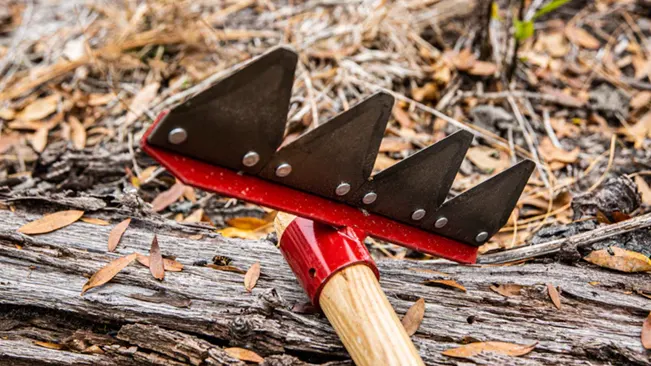
| Specification | Details |
|---|---|
| Design | Long handle with a wide head and sharp teeth |
| Material | Steel head, wooden or fiberglass handle |
| Length | Usually around 60 inches (152 cm) |
| Weight | Around 6 to 8 lbs (2.7 to 3.6 kg) |
| Teeth | Four to six sharp, durable teeth |
Tips for Maximizing Efficiency with the Fire Rake Tool
- Use the Right Technique: Pull the rake towards you to gather debris and clear vegetation.
- Keep Blades Sharp: Sharp blades are more effective and require less effort.
- Work in Teams: Coordinate with others to clear larger areas more effectively.
- Be Mindful of Surroundings: Stay aware of fire movement and team locations.
- Clean After Use: Remove debris from the rake to maintain its condition.
Do and Don’t in Using Fire Rake during Wildfire
Do: Use the fire rake to clear away brush, leaves, and other ground debris to create a bare mineral soil line or to clean up an area post-fire.
Don’t: Don’t use the fire rake on rocky or extremely hard surfaces where the teeth could be damaged, and avoid swinging it like an axe which is unsafe and ineffective.
6. Fire Swatter/Flapper: The Extinguisher
A fire swatter or flapper is a tool with a large, flat, flexible rubber head attached to a handle. It’s used to smother and extinguish flames by depriving them of oxygen.
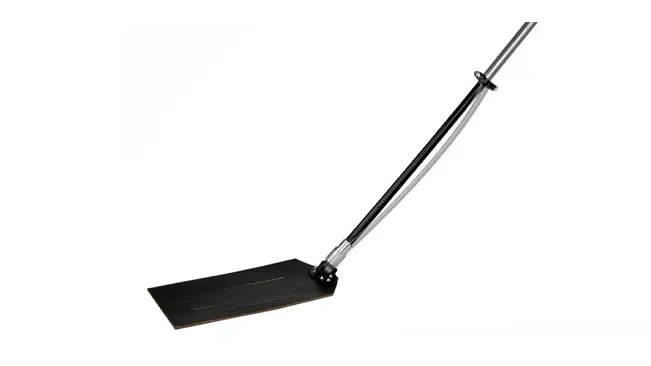
| Specification | Details |
|---|---|
| Design | Large, flat, flexible rubber head on a handle |
| Material | Fire-resistant rubber or similar material, wooden or metal handle |
| Length | Typically around 5 to 6 feet (152 to 183 cm) |
| Weight | Relatively lightweight for ease of use |
| Use | Smothering small flames and hotspots |
Tips for Maximizing Efficiency with the Fire Swatter/Flapper Tool
- Aim for the Base of Flames: Target the base of the fire to cut off oxygen effectively.
- Use a Smothering Action: Use the tool to pat down, not sweep, the flames.
- Work in Short, Quick Strokes: This increases effectiveness and reduces fatigue.
- Coordinate with Others: Work in unison with others for larger fire areas.
- Inspect the Tool: Regularly check for damage to the swatting material.
Do and Don’t in Using Fire Swatter/Flapper during Wildfire
Do: Use the fire swatter or flapper to smother and extinguish small fires or hot spots by depriving them of oxygen, making quick and effective patting motions.
Don’t: Don’t use it on large or rapidly spreading fires where it would be ineffective and could put you in danger; in these cases, retreat and call for backup.
7. Water Backpack: The Portable Extinguisher
Portable water backpacks allow firefighters to carry water to remote areas. They come with a hand pump and are used to spray water or fire retardants on hot spots.

| Specification | Details |
|---|---|
| Capacity | Around 4-5 gallons (15-19 liters) |
| Material | Durable, fire-resistant synthetics or plastics |
| Pump Type | Manual hand pump for controlled spraying |
| Weight (Full) | Around 40 to 45 lbs (18 to 20 kg) when filled |
| Use | Extinguishing small fires, hotspot control |
Tips for Maximizing Efficiency with the Pulaski Tool
- Proper Filling: Fill to capacity but ensure it’s a manageable weight.
- Test the Sprayer: Check the nozzle and pump action before heading out.
- Aim Effectively: Target the base of flames and hot spots.
- Stay Hydrated: Carry drinking water separately for personal hydration.
- Regular Checks: Inspect for leaks and hose integrity regularly.
Do and Don’t in Using Water Backpack during Wildfire
Do: Utilize the water backpack to douse small fires or hot spots, especially in areas that vehicles cannot reach, ensuring a targeted and controlled application.
Don’t: Don’t attempt to fight large or rapidly spreading fires with a water backpack; it’s intended for small-scale firefighting and may not be effective in such conditions.
8. Safety Gear: The Protector
Not exactly a tool, but equally important, safety gear such as helmets, goggles, gloves, and fire-resistant clothing protects firefighters from the hazards of wildland firefighting.
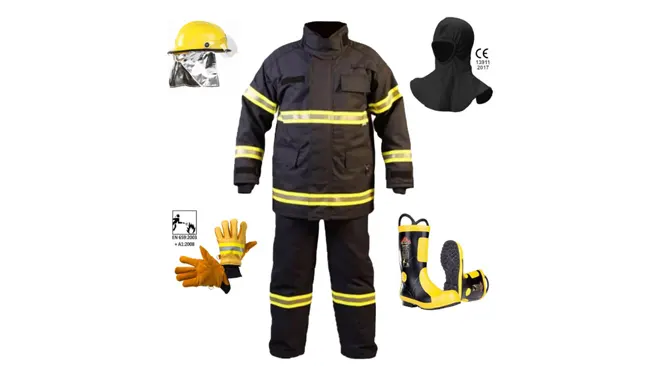
| Specification | Details |
|---|---|
| Components | Helmet, goggles, gloves, clothing, boots |
| Material | Fire-resistant fabrics like Nomex, leather for boots |
| Helmet | Designed to protect from falling debris and heat |
| Respiratory Gear | Masks or respirators for smoke protection |
| Visibility | Often includes reflective elements for safety |
Tips for Maximizing Efficiency with the Safety Gear
- Full Coverage: Ensure all body parts are covered with appropriate gear.
- Regular Inspection: Check for wear and tear, and replace damaged items.
- Stay Visible: Use gear with reflective materials for high visibility.
- Proper Fit: Make sure all gear fits correctly for maximum protection.
- Respiratory Protection: Use masks or respirators in smoky conditions to avoid inhalation of harmful particles.
Do and Don’t in Using Safety Gear during Wildfire
Do: Always wear complete safety gear, including fire-resistant clothing, helmets, and goggles, to protect yourself from the heat, smoke, and debris typical of wildfires.
Don’t: Never neglect any piece of safety equipment, even if the fire seems small or manageable; unexpected shifts in conditions can rapidly increase danger levels.
Conclusion
The battle against wildfires is fought on the ground with sheer physical effort, supported by a suite of specialized hand tools. These tools are an extension of the firefighters themselves – practical, robust, and reliable. By understanding the functionality and strategic use of each, firefighters are better equipped to tame the unpredictable nature of wildfires and protect our landscapes.
Frequently Asked Questions (FAQs)
- What is a Pulaski used for in firefighting?
- A Pulaski combines an axe and an adze, used for chopping wood and digging soil to construct firebreaks and clear vegetation.
- How does a McLeod tool help in fighting wildfires?
- The McLeod, with a rake-like and hoe-like side, is used for raking debris, clearing brush, and creating mineral soil fire lines, crucial in preventing fire spread.
- Why is a chainsaw important in wildfire management?
- Chainsaws quickly cut through large trees and dense brush, essential for creating firebreaks and access paths during wildfire containment efforts.
- What is the function of a fire rake in controlling wildfires?
- A fire rake, with sharp teeth, clears underbrush and debris, creating bare soil lines that act as barriers to slow or stop a fire’s spread.
- How does a fire swatter/flapper help in extinguishing wildfires?
- A fire swatter/flapper is used to smother small fires or hot spots by cutting off the oxygen supply, effectively extinguishing the flames.
- What role does a water backpack play in wildfire situations?
- A water backpack allows firefighters to carry and spray water or retardants in remote or inaccessible areas, ideal for controlling small fires or hot spots.
- Why is safety gear crucial for individuals using wildfire hand tools?
- Safety gear protects users from heat, smoke, flying debris, and tool-related injuries, ensuring the user’s safety during intense and hazardous wildfire conditions.
- Can a shovel be used in fighting wildfires?
- Yes, shovels are used to dig trenches, move soil, and cover small flames, playing a vital role in constructing fire lines and extinguishing minor fires.
- What maintenance is required for wildfire hand tools?
- Regular cleaning, sharpening (for cutting tools), checking for damage, and ensuring that handles and connections are secure are essential maintenance tasks.
- Are there specific training requirements for using these tools?
- While basic operation of these tools is straightforward, proper technique and safety training are recommended, especially for more complex tools like chainsaws.
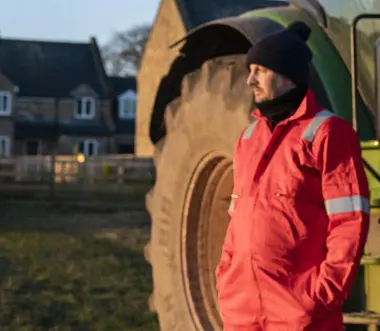
Charles Hayes
Forestry AuthorI'm Charles Hayes, I bring over 15 years of specialized expertise in landscaping and woodworking, blending artistic design with sustainable environmental stewardship. My career, fueled by a profound passion for the natural world, encompasses extensive education and hands-on experience in creating harmonious, eco-friendly outdoor spaces and responsibly managing forest resources. Recognized for my professional standing, I am committed to continuous learning and certification in cutting-edge practices. My expertise is not only reflected in my work but also in my contributions to community projects, educational workshops, and collaborations with industry leaders. As an authoritative voice in my field, I strive to share knowledge and promote environmentally conscious approaches, making me a trusted resource in landscaping and forestry.













Leave your comment